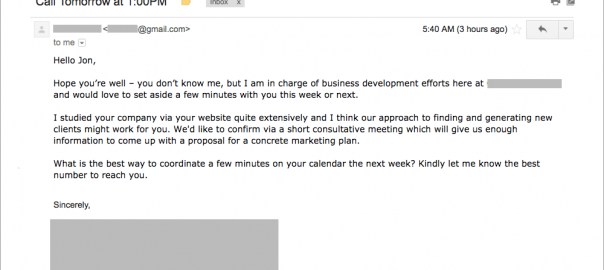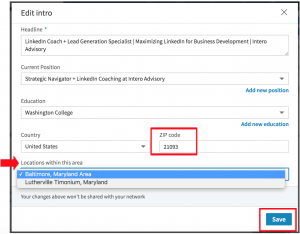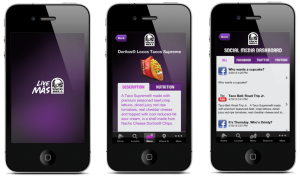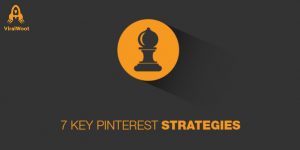
We’re trending away from outreach that can only be described as “robo-spam.” Sales reps are getting real with their prospects again and bringing some respect back to the craft of building pipeline.
Quality over quantity is here to stay, but sales reps still face a persistent and formidable challenge: maintaining balance in their approach to Account Based Sales.
You could be the best cold caller in the world, but if you don’t have a process for finding the next great account, you are making the job much harder on yourself. Conversely, you might have selected the right target accounts that best match your company’s Ideal Customer Profile (ICP), but if you’re blasting prospects with robo-spam emails, you‘ll still have a hard time being successful.
There are many factors that contribute to a healthy pipeline, but the best prospectors I’ve witnessed have mastered their mindset, strategy, and execution.
Mindset
Similar to swing-thoughts golfers fall back on during a bad round, it’s important to have a few mental guidelines that allow the attributes we associate with top performers (confidence, positivity, energy etc.) to manifest themselves naturally.
Below are three keys that have proven most successful in my experience:
- “Always have a reason for every piece of your outreach” (John Barrows).
- Operate off the assumption that you are supposed to receive a fair amount of initial rejection. Everyone is protective of their own time, especially when dealing with unfamiliar contacts.
- I’m not trying to close anyone — I’m doing my prospects a favor by presenting them with the unique opportunity to learn more about a solution that has helped other teams improve in areas relevant to their role.
Strategy
1.) Become a SFDC Expert
- If it’s in Salesforce, you need to be able to find it on your own. A top performing Account Development Representative builds their own reports and views according to what they need at any given moment.
2.) Grab the low hanging fruit as fast as possible
- First, spend time on the accounts that pay attention to your brand. Sort your account reports and views by those accounts that have your IBP (Ideal Buyer Profile) who download your content, visit your website, and engage with your outbound sales emails.
- Run closed lost opportunity Plays to target accounts that are customized on specific reasons – timing, competition, product feature etc. Providing a compelling reason for a previous evaluator to take another look at your solution has a much higher conversion rate than net new prospects.
- Reach out to people with the most developed LinkedIn profiles. You’ll have more triggers to work with and in my experience those people are the most willing to have conversations.
- Leverage your colleague’s relationships and commonalities to your prospects. If you notice your Marketing Director is connected to an influencer at a target account, draft an email for them that fits into your regular prospecting efforts.
3.) Don’t neglect the phone
- “But people don’t pick up anymore!” — Call an executive mid-day on a Tuesday and you’d be right. But call them at least twice a day during off peak hours, and I bet you’ll see different results.
- A number of free mobile apps (Sideline / Burner) allow you to switch up your phone number. So call down that list with one number in the morning and then move back up with another in the evening.
- Be natural and get straight to the reason for your call
4.) Know your conversion rates
- Quality touch points at scale is the name of the game. When you’re able to make personalized, relevant connections at a high volume, you’re going to win.
- Know your conversion rates through the touch process, and monitor them over time. Once you understand KPIs, like your Call to Connect, Connect to Meeting Scheduled, and emails per Meeting Scheduled, you can then work backwards from your pipeline goal to establish the necessary activity output.
5.) Schedule emails and calls during executive down hours
- There are countless studies on the best times to call and email. But how much data do we really need on this topic? The cycles of business are mostly obvious — the majority of executives are powering through meeting after meeting from roughly 8am to 6pm. Plan your outreach accordingly. Catch them on their downtime early in the morning, during lunch, and at the end of their day.
- Schedule a good number of your emails to go out on Sunday evening when decision-makers are planning for the week ahead.
- Remember that there are cycles to every unique business and IBP. For Example, at the end of a month or quarter you have the increased likelihood to reach sales executives throughout the day, since they are expecting deal calls.
Execution
1.) Don’t use inbound content as a crutch/shortcut from doing the real work of prospecting
- Open a cold call or email asking what your prospect thought of your company’s eBook or 1-pager, and you can tee up that senseless hippo chasing you email as your next touch, saving yourself the time required to follow up.
- Use inbound as a means to gauge interest and the current business priorities across your target accounts, and then finish an email or call with tailored suggestions from your content that the prospect might find relevant to their role.
2.) First impression is everything – Connect the dots
- When someone is contacted by a person they don’t know, they make an instinctive, split-second decision on whether they want to engage in conversation or not. Once you’ve been mentally bucketed into spam or someone who has nothing to offer, you’ll have a tough time reversing that decision.
- Non-decision makers and time wasters respond to templated content follow up, whereas business leaders engage only with someone who has demonstrated a level of effort, and presented something they could potentially benefit from.
- If you or someone else at your company has a personal connection with a prospect (relationship, school, unique hobby etc.) lead with that, followed by a message that connects your product to their role.
- If no personal connection exists, lead with the organizational commonalities. For example, “I noticed you are following one of our best customers X on LinkedIn…”
- If you or someone else at your company has a personal connection with a prospect (relationship, school, unique hobby etc.) lead with that, followed by a message that connects your product to their role.
3.) Be quick to respond
- If you take an hour to respond to someone over email who replied they have no budget, you’ve lost them. Constantly monitor your inbox on a separate screen and be quick to respond — you are trying to engage in an email based conversation to lock down the intro call.
4.) Using Direct Mail / Social
- Use tools like CoffeeSender to send prospects a Starbucks coffee with a personalized note on a cold day in places like New York and Boston.
- I’m not a fan of InMails – too much job recruiting spam goes down in that medium. I prefer to reference tweets or send meaningful comments on a prospect’s LinkedIn posts.
5.) Work with the information you are given to land the meeting
- This is possibly the most critical aspect of execution, and I believe it is the main driver of performing above average. When done correctly, someone telling you “no” in various ways simply contains the information you need to book a meeting. Never directly combat an objection especially when prospecting, we simply haven’t had the chance to build enough trust.
Small examples of this common mistake are:
I don’t have budget — > “Actually our software isn’t that expensive”
This isn’t a good time —> “I’m just asking for 15 minutes”
- Dr. Cialdini’s book Influence: How and why People Agree to Things dictates “Commitment and Consistency” as one of the six principles of human persuasion. This is extremely important to keep in mind during our initial interactions with prospective buyers.
- People tend to immediately stick by statements they make or the values they have. No surprise, right? We should respect that, and swiftly acknowledge the objections we encounter. When it comes time to make the second or third ask, do so in a way that incorporates the initial pushback or information you received the first time around.
7.) Know that every interaction in some way is, or will become, a negotiation
- In my experience, many prospects don’t want to give you 100% of what you asked for, even if it doesn’t really matter to them. When building pipeline, this is most relevant to scheduling the timing of our meetings.
- Want someone to take the meeting tomorrow? Ask them if they have some time this afternoon. Setup your concession to be something you don’t care about, and at the same time assumes that there should be urgency to learning more about your solution.
(89)





